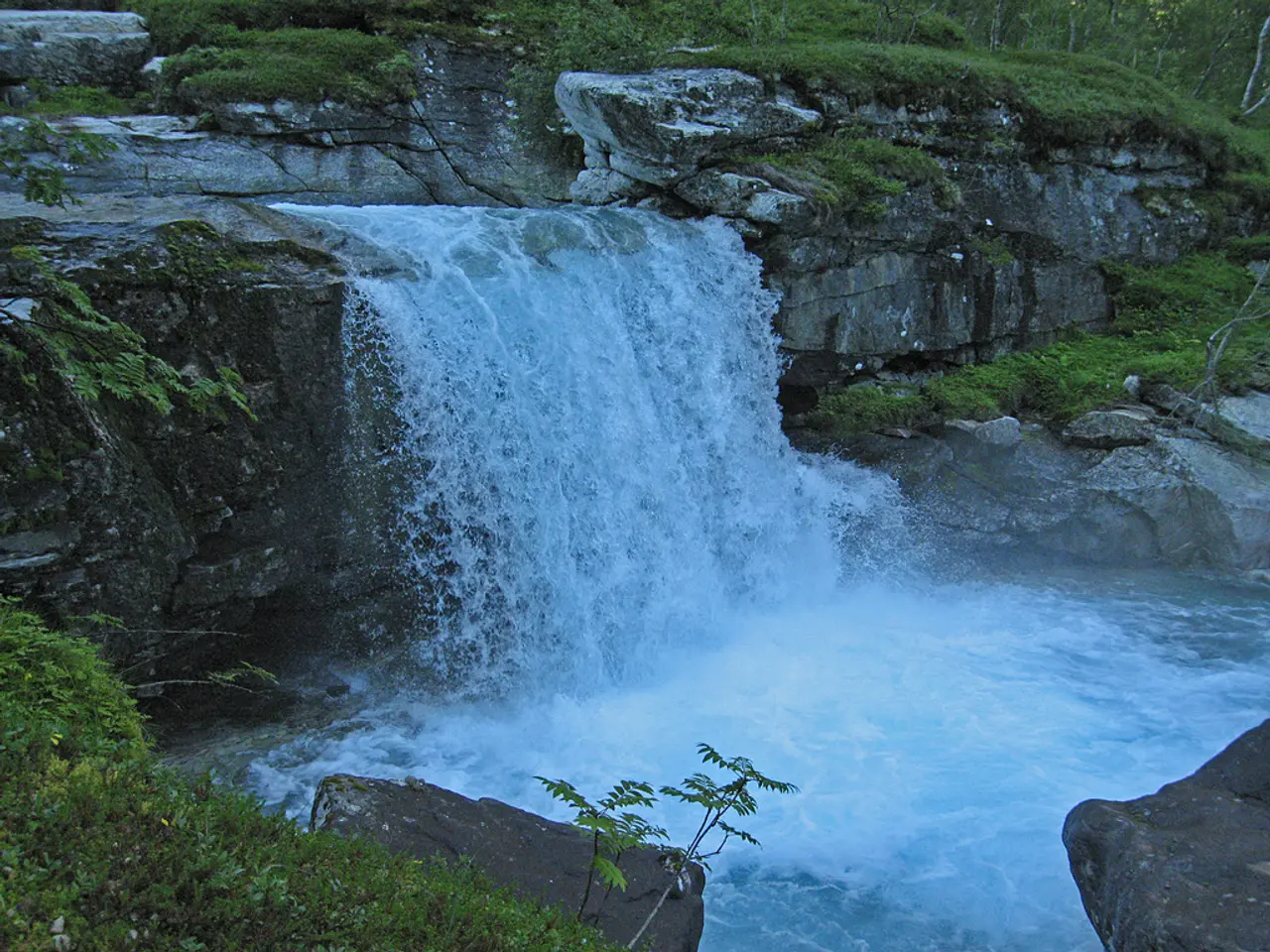Guide for Waterfall Painting
In the realm of painting, waterfalls present a complex and captivating subject. To effectively depict these natural wonders, artists focus on simplifying shapes, capturing movement, using color thoughtfully, and depicting the contrast between rigid rocks and flowing water.
Simplifying Shapes
Start by blocking in large, major shapes rather than details, using big brushes and wet paint. This approach helps avoid overworking small areas and encourages a loose, impressionistic style. Softening edges where water meets rock can avoid harsh lines and suggest flow dynamics. Emphasise simple, bold shapes early, refining only as needed.
Capturing Movement
Convey water’s motion through directional brush strokes and layering. Use softer edges and blended areas to represent the spray and flow, and sharper edges to indicate splashing or water hitting rocks. Avoid overly detailed strokes initially; suggest movement through shape and value contrasts.
Using Color
Limit your palette to a simplified set of colours to maintain harmony, focusing on cool blues, greens, and warm neutral tones for rocks. Vary saturation and value to separate water from rock and convey depth. The use of translucent layers or washes can suggest flowing water’s translucency and movement.
Depicting Rigid Rocks and Flowing Water
Represent rocks with structured, angular shapes using harder edges and more textured brushwork to contrast with the smoother, flowing water shapes. Rocks often have solid, consistent tones with subtle highlights; water is more varied with highlights and reflective qualities that shift with movement.
These approaches, drawn from recent tutorials using gouache and acrylic media, emphasise loose, confident brushwork. They encourage artists to suggest rather than overdefine waterfall scenes.
Considering Surroundings
Rocks, trees, and other objects in the water are major shapes to consider. Colours change every time there is a change in plane or the nature of the water, and should be used to capture or emphasise these changes. Cast shadows from surrounding trees or rocks should be considered, using darker colours for these areas. To indicate wetness on rocks and trees, partial reflections can be painted.
Examples of Excellent Waterfall Paintings
John Singer Sargent's Yoho Falls is a prime example of a waterfall painting that captures the organic and connected flow of water down through rocks, with attention to detail in painting all the cast shadows on the waterfall. Sargent's The Athenaeum, Mountain Waterfall is another good example of capturing the movement of water without overdoing it on the detail.
By focusing on simplifying shapes, capturing movement, using colour thoughtfully, and depicting the contrast between rigid rocks and flowing water, artists can create stunning waterfall paintings that capture the essence of these magnificent natural wonders.
*When seeking inspiration for a fashion-and-beauty campaign, one could look to the landscape of waterfalls, mirroring the movement and vibrancy in clothing patterns and makeup hues.* A travel itinerary incorporating food-and-drink experiences might include a visit to a local waterfall, where the flavors of regional cuisine pair beautifully with the natural surroundings.* To create a home-and-garden ambiance that reflects an active lifestyle, consider a painting of a waterfall as the centerpiece, offering a dynamic fusion of tranquility and movement.





